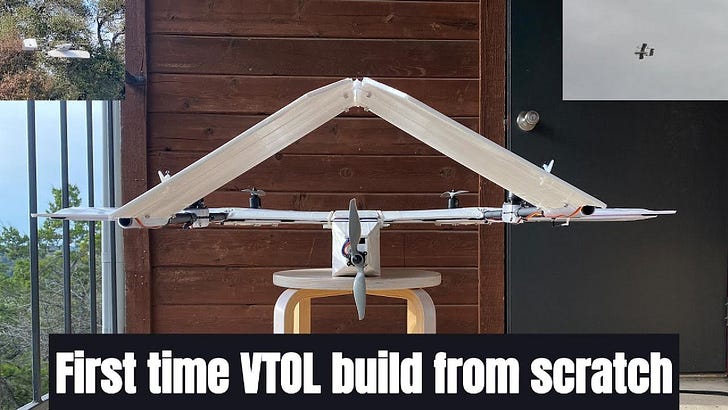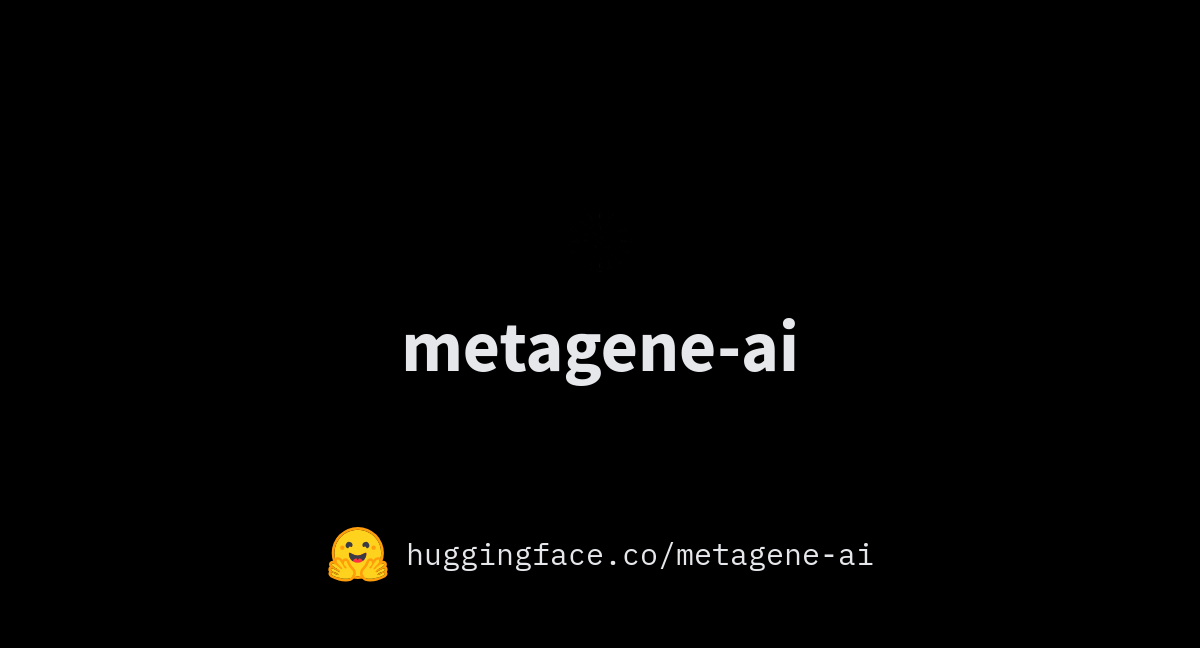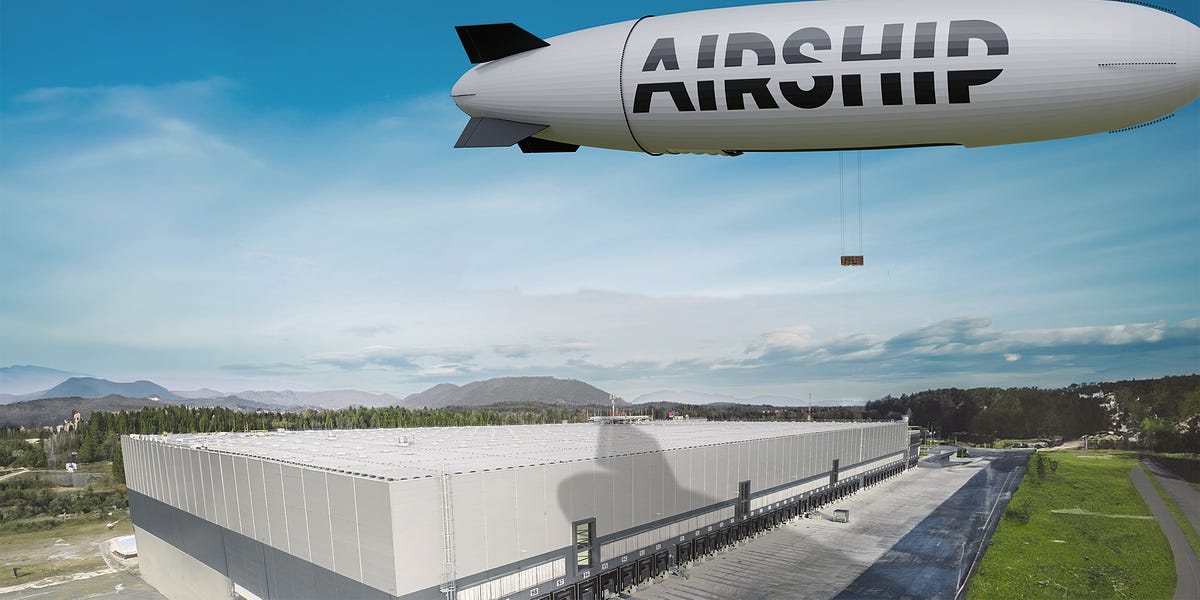211837
s5eeo
@s5eeo #211837
-
1086 Follower 383 Following
It’s parody but this video captures some of the realities of this so well.
https://warpcast.com/teleyinex.eth/0x78b52a7b
https://youtu.be/JeNS1ZNHQs8?si=vCb-7MYiRFU2BG_f
https://warpcast.com/teleyinex.eth/0x78b52a7b
https://youtu.be/JeNS1ZNHQs8?si=vCb-7MYiRFU2BG_f
Humanoids might just be the most versatile form factor, not skeuomorphism.
https://warpcast.com/s5eeo/0xbdbb4033
https://warpcast.com/s5eeo/0xbdbb4033
Loading...
Someone built a small VTOL (vertical takeoff and landing) aircraft from scratch with no experience and shared how he designed and built it:
https://www.tsungxu.com/p/first-vtol-design-build-and-flight
Very cool.
https://www.tsungxu.com/p/first-vtol-design-build-and-flight
Very cool.
You love to see it: a foundation model for tasks related to pathogen detection and pandemic monitoring.
- Paper: https://metagene.ai/metagene-1-paper.pdf
- Huggingface: https://huggingface.co/metagene-ai
It’s trained on DNA and RNA strands from human wastewater, including samples from bacteria, viruses and other organisms.
Weights are open source.
- Paper: https://metagene.ai/metagene-1-paper.pdf
- Huggingface: https://huggingface.co/metagene-ai
It’s trained on DNA and RNA strands from human wastewater, including samples from bacteria, viruses and other organisms.
Weights are open source.
There’s a podcast about materials science called “Materialism” and the episodes usually have a lot of interesting tidbits. They sometimes use technical terms without explaining them, so some prior exposure to MS (e.g. through engineering) helps but I think most of the content is very approachable and interesting nonetheless.
Here are two episodes I liked:
- Stories from a materials salesman: https://open.spotify.com/episode/3aKOMMdAHAlSNiigOvSlws?si=ATMjytJHQg2YILHvuEA0Dg
- You don’t know anything about steel: https://open.spotify.com/episode/2myA5oLPbB5pdGaEHP20zr?si=12w2Bey1RKOzBu4s684B1w&t=997
.
Here are two episodes I liked:
- Stories from a materials salesman: https://open.spotify.com/episode/3aKOMMdAHAlSNiigOvSlws?si=ATMjytJHQg2YILHvuEA0Dg
- You don’t know anything about steel: https://open.spotify.com/episode/2myA5oLPbB5pdGaEHP20zr?si=12w2Bey1RKOzBu4s684B1w&t=997
.
Idk anything about this MIRA token but the ease of fundraising for public goods (esp. research and IP) on crypto infra is perhaps still an underappreciated use case of crypto.
https://x.com/blader/status/1872123205483417780
https://x.com/blader/status/1872123205483417780
Quite approachable intro to molecular dynamics for anyone who’s interested:
https://www.owlposting.com/p/a-primer-on-molecular-dynamics
There’s also an interesting podcast episode with the author about the role of AI in this field.
https://open.spotify.com/episode/0pWdz7GMRMAViSCY5vMXFb?si=egRlN4hoQcea29lluslXMA
https://www.owlposting.com/p/a-primer-on-molecular-dynamics
There’s also an interesting podcast episode with the author about the role of AI in this field.
https://open.spotify.com/episode/0pWdz7GMRMAViSCY5vMXFb?si=egRlN4hoQcea29lluslXMA
Interesting exploration of the improving economics of water desalination and its implications:
https://unchartedterritories.tomaspueyo.com/p/does-desalination-promise-a-future
The author’s takeaways are:
- “Desalinated water now costs as little as $0.40 per ton […], likely to drop to $0.30 in the next decade.”
- cheaper water and transport costs of 0.05$/ton mean “that deserts couldn’t produce every agricultural product in the world. But they could produce a bunch!”
https://warpcast.com/s5eeo/0xaf123630
https://unchartedterritories.tomaspueyo.com/p/does-desalination-promise-a-future
The author’s takeaways are:
- “Desalinated water now costs as little as $0.40 per ton […], likely to drop to $0.30 in the next decade.”
- cheaper water and transport costs of 0.05$/ton mean “that deserts couldn’t produce every agricultural product in the world. But they could produce a bunch!”
https://warpcast.com/s5eeo/0xaf123630
It's not new, but Meta released multiple versions of SPIRIT-LM a while back, a multimodal language model that mixes text and speech. Sharing it here because I didn't know it's out there. And it's open-source.
"Large language models are frequently used to build text-to-speech pipelines, wherein speech is transcribed by automatic speech recognition (ASR), then synthesized by an LLM to generate text, which is ultimately converted to speech using text-to-speech (TTS). However, this process compromises the expressive aspects of the speech being understood and generated. In an effort to address this limitation, we built Meta Spirit LM, our first open source multimodal language model that freely mixes text and speech."
They also have a demo page with samples: speechbot.github.io/spiritlm/
Sounds like there is room for improvement but this is the worst it will ever be.
"Large language models are frequently used to build text-to-speech pipelines, wherein speech is transcribed by automatic speech recognition (ASR), then synthesized by an LLM to generate text, which is ultimately converted to speech using text-to-speech (TTS). However, this process compromises the expressive aspects of the speech being understood and generated. In an effort to address this limitation, we built Meta Spirit LM, our first open source multimodal language model that freely mixes text and speech."
They also have a demo page with samples: speechbot.github.io/spiritlm/
Sounds like there is room for improvement but this is the worst it will ever be.
I've seen a lot of people argue that humanoid robots are a form of skeuomorphism because there are much better form factors, even for homes (e.g. wheel base with arms, robot dog with an arm as the head).
I watched an interview where the roboticist Eric Jang shared his take on this. He believes that the humanoid form factor for an environment like a home is not just sufficient but actually necessary. And he went into concrete reasons why he thinks so, which was super interesting.
If anyone wants to watch it, the discussion about this starts at 21:55 in the video.
https://www.youtube.com/watch?v=OHsWJ_XNEz0&t=1395s
I'd add some quotes from the interview here but I'll cast hem in the comments. Reaching the character limit.
I watched an interview where the roboticist Eric Jang shared his take on this. He believes that the humanoid form factor for an environment like a home is not just sufficient but actually necessary. And he went into concrete reasons why he thinks so, which was super interesting.
If anyone wants to watch it, the discussion about this starts at 21:55 in the video.
https://www.youtube.com/watch?v=OHsWJ_XNEz0&t=1395s
I'd add some quotes from the interview here but I'll cast hem in the comments. Reaching the character limit.
They have a demo of this now on Huggingface:
https://huggingface.co/spaces/zama-fhe/encrypted_dna
Concept is:
1. Data (e.g. DNA) is encrypted on the client side and sent to a server / service
2. Encrypted data is processed (e.g. DNA analysis, generation of health risk reports etc.) on the server and sent back to the client
3. Results are decrypted on the client side
Would love to see this applied on a commercial scale. The data leak at 23andMe underscores that this is important.
When using services on your sensitive data no longer requires direct access, it should also lower the barrier of entry for new companies in this space, since the trust barriers are lowered if you never hand over your unencrypted data anyway. So another benefit of this tech is that it could ultimately also lead to a more vibrant ecosystem of services that rely on processing personal data.
https://warpcast.com/s5eeo/0xcb591e74
https://huggingface.co/spaces/zama-fhe/encrypted_dna
Concept is:
1. Data (e.g. DNA) is encrypted on the client side and sent to a server / service
2. Encrypted data is processed (e.g. DNA analysis, generation of health risk reports etc.) on the server and sent back to the client
3. Results are decrypted on the client side
Would love to see this applied on a commercial scale. The data leak at 23andMe underscores that this is important.
When using services on your sensitive data no longer requires direct access, it should also lower the barrier of entry for new companies in this space, since the trust barriers are lowered if you never hand over your unencrypted data anyway. So another benefit of this tech is that it could ultimately also lead to a more vibrant ecosystem of services that rely on processing personal data.
https://warpcast.com/s5eeo/0xcb591e74
I love watching automated assembly lines do their work. It's so mesmerizing.
https://www.youtube.com/watch?v=uCgnWqoP4MM
https://www.youtube.com/watch?v=uCgnWqoP4MM
Interesting thread on treating age-related diseases vs. preventing aging:
https://x.com/lnuzhna/status/1840422812491923482?s=46
The author (Lada Nuzhna) is suggesting that trying to treat a complex age-related diseases by targeting a single mechanism is the wrong approach. But the problem is that combo treatments are more expensive and complicated and it’s harder to figure out which potential combos should be given a try.
But at the same time, the author still thinks that "single mechanisms in aging prevention (NOT treating age-related diseases) can and will work".
https://x.com/lnuzhna/status/1840422812491923482?s=46
The author (Lada Nuzhna) is suggesting that trying to treat a complex age-related diseases by targeting a single mechanism is the wrong approach. But the problem is that combo treatments are more expensive and complicated and it’s harder to figure out which potential combos should be given a try.
But at the same time, the author still thinks that "single mechanisms in aging prevention (NOT treating age-related diseases) can and will work".
I somehow expected the fastest bipedal robots to be faster at running than humans already. But I was surprised to learn that this is not just wrong but that it's not even close!
The latest world record for the running speed of a bipedal robot is 24.73 seconds for 100 meters (~14.6 kmh or 9 mph).
The world record for humans is 9.58 seconds (~37.6 kmh or 23.4 mph).
Even for quadruped robots, the current world record is 19.87 seconds (~18.1 kmh or 11.3 mph), also surprisingly far behind.
Speeds on treadmills can be much faster but they're not directly comparable with overground walking / running.
The video shows footage of the fasted bipedal robot I could find for overground running and running on a treadmill, respectively.
Happy to be corrected, if I missed anything!
The latest world record for the running speed of a bipedal robot is 24.73 seconds for 100 meters (~14.6 kmh or 9 mph).
The world record for humans is 9.58 seconds (~37.6 kmh or 23.4 mph).
Even for quadruped robots, the current world record is 19.87 seconds (~18.1 kmh or 11.3 mph), also surprisingly far behind.
Speeds on treadmills can be much faster but they're not directly comparable with overground walking / running.
The video shows footage of the fasted bipedal robot I could find for overground running and running on a treadmill, respectively.
Happy to be corrected, if I missed anything!
Batteries are a nice example of things that become cheaper *and* better over time.
I suspect the yellow part in the bar chart and the growth it's been having is still flying under most people's radar.
Charts are from here:
https://rmi.org/the-rise-of-batteries-in-six-charts-and-not-too-many-numbers/
I suspect the yellow part in the bar chart and the growth it's been having is still flying under most people's radar.
Charts are from here:
https://rmi.org/the-rise-of-batteries-in-six-charts-and-not-too-many-numbers/
Nice glimpse at a humanoid robot performing outside of a pure demo environment.
Would have loved to see some failures and more unscripted everyday interactions to see where the limits are but this was still super interesting.
https://youtu.be/Sb6LMPXRdVc?si=sPKkxzvIG3IZySMG
Would have loved to see some failures and more unscripted everyday interactions to see where the limits are but this was still super interesting.
https://youtu.be/Sb6LMPXRdVc?si=sPKkxzvIG3IZySMG
Never would have thought that a single, niche cast would make me a top caster at any point.
Roboforming is so cool. It's a manufacturing process that uses synchronized robotic arms with special end-effectors to incrementally shape metal sheets into more complex parts. One robot pushes and deforms the sheet while the other robot provides support.
This enables high customization and quick production of small batches of products, which makes it great for rapid prototyping and design iteration. The level of synchronization required for this to work precisely and reliably is way harder to achieve than it may seem.
This enables high customization and quick production of small batches of products, which makes it great for rapid prototyping and design iteration. The level of synchronization required for this to work precisely and reliably is way harder to achieve than it may seem.


















